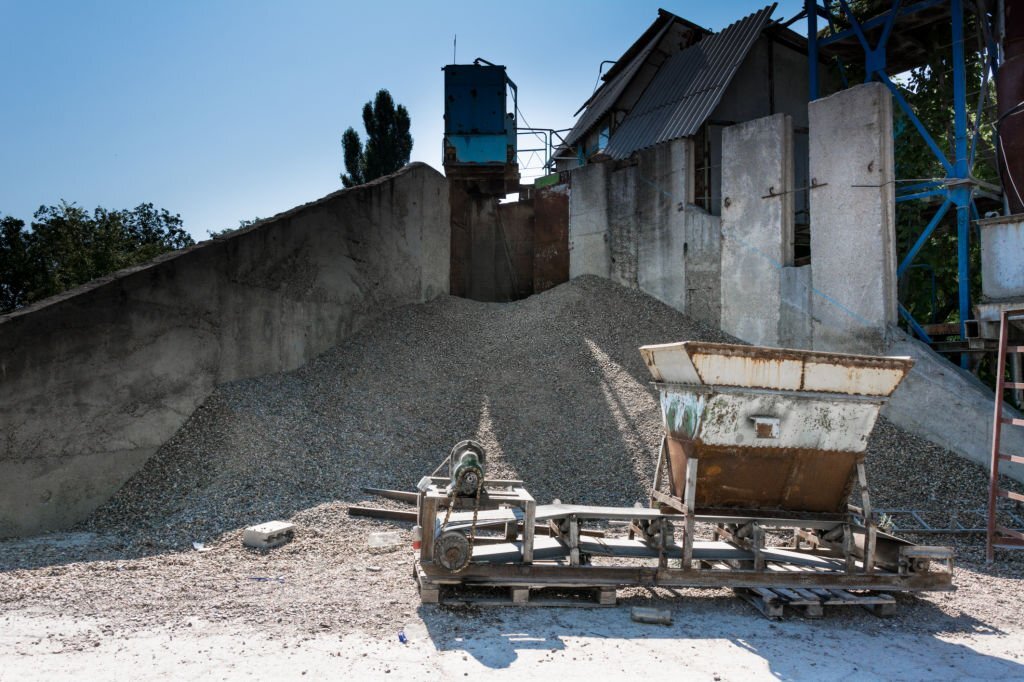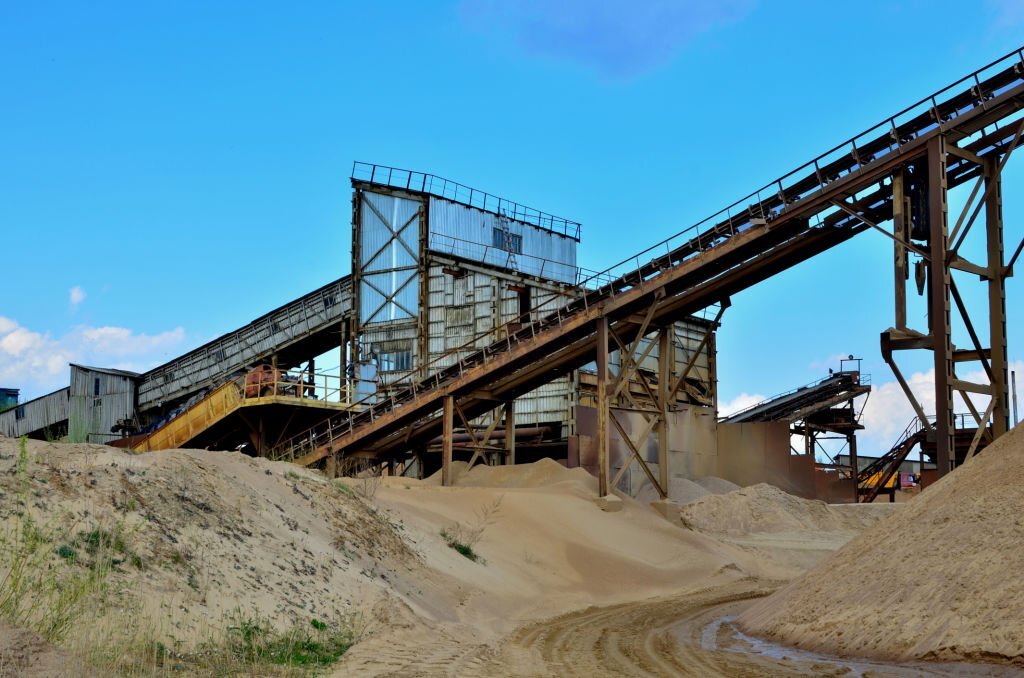
Crushing and screening equipment play pivotal roles in a multitude of industries, from mining and construction to recycling and agriculture. These machines are vital for processing raw materials, sorting aggregates, and preparing materials for further use. To fully appreciate their functionality, it’s essential to understand the main components that make up these systems. In this article, we’ll delve into the core elements of crushing and screening equipment and their significance in various industrial applications.
1. Crushers
Crushers are the workhorses of crushing equipment, responsible for reducing large chunks of raw material into smaller, manageable pieces. There are various types of crushers, including jaw crushers, cone crushers, impact crushers, and gyratory crushers. Each type has its unique advantages, making them suitable for specific tasks. Jaw crushers, for instance, are ideal for primary crushing, while cone crushers excel at secondary and tertiary crushing.

2. Screens
Screens are crucial components used in the screening part of the equipment. They come in various forms, such as vibrating screens, trommel screens, and grizzly screens. Screens efficiently separate materials of different sizes, ensuring that only the desired particles pass through for further processing. Vibrating screens use vibrations to separate materials, while trommel screens rotate to sift through materials like sand, soil, and compost. Grizzly screens, equipped with bars or grids, remove oversized materials before they reach the crusher, enhancing the efficiency of the system.

3. Conveyors
Conveyors are the backbone of the material handling process in crushing and screening equipment. They transport materials from one point to another, enabling the seamless flow of raw materials through the entire system. Conveyors come in various types, such as belt conveyors, screw conveyors, and apron feeders, each designed for specific applications. Belt conveyors, for example, are commonly used for transporting bulk materials over long distances, while apron feeders are ideal for feeding crushers with a controlled flow of material.
4. Feeders
Feeders are responsible for supplying a steady stream of material to the crushers and screens. Vibrating feeders, in particular, are widely used because they efficiently regulate the flow of material, preventing overloading or underfeeding of the processing equipment. They are equipped with vibrating mechanisms that ensure a uniform and controlled feed, optimizing the performance of the entire system.
5. Vibrating Grizzly Feeders
Vibrating grizzly feeders are a specific type of feeder equipped with a robust grizzly screen at the entrance. They excel at removing oversized materials and preventing them from entering the crusher, thereby improving the efficiency of the crushing process. These feeders are commonly used in industries like mining and quarrying.
6. Control Systems
Modern crushing and screening equipment often feature advanced control systems. These systems allow operators to monitor and adjust various parameters, such as feed rate, crusher settings, and screen settings, to optimize performance and efficiency. Remote monitoring and automation technologies have become increasingly prevalent, further enhancing the overall control and productivity of these machines.
Exploring the Vital Elements: Crushing and Screening Equipment Components
In the world of heavy machinery and industrial processes, the efficient functioning of crushing and screening equipment is paramount. Whether in mining, construction, or recycling, these machines are the backbone of material processing. To truly understand the intricacies of this equipment, one must dissect its core elements. In this article, we’ll embark on a journey to uncover the vital components that make crushing and screening equipment the workhorses of various industries.

1. Crushing Equipment Components
Crushers are the stars of the show when it comes to breaking down raw materials. Understanding their components is crucial to appreciating their role in the process. Key parts of crushers include:
- Jaw Plates: These are fixed or movable plates that crush material against each other.
- Cone Mantle and Concave: Found in cone crushers, these parts create a crushing chamber.
- Hammers and Blow Bars: Common in impact crushers, they strike the material, breaking it into smaller pieces.
- Rotors and Shafts: Central components that transmit power and motion to the crusher.
2. Screening Equipment Parts
Screens are responsible for sorting materials based on size or other criteria. Various types of screens exist, but their fundamental components are similar:
- Screen Mesh: The surface on which materials are sorted. Mesh size dictates what passes through.
- Screen Decks: Multiple layers of screen mesh allow for better separation.
- Springs and Bearings: These ensure the screen’s vibrations and movements are smooth and consistent.
- Drive Mechanism: Powers the screen’s motion, whether vibrating or rotating.
3. Crusher Components
Apart from the specific parts within crushers, certain general components contribute to their overall functionality and efficiency:
- Feed Hoppers: The initial point where raw materials are loaded into the crusher.
- Discharge Chutes: Direct the crushed material away from the crusher.
- Hydraulic Systems: Aid in adjusting crusher settings and clearing blockages.
4. Screen Components
Similarly, screens have additional components that optimize their performance:
- Screen Support Structure: Provides stability and ensures proper alignment.
- Eccentric Shafts: Generate the screen’s vibrations.
- Motor and Drive Assembly: Powers the screen’s movement.
5. Conveyor Systems in Crushing and Screening
Conveyors are the unsung heroes of material handling within these systems. They move material seamlessly, ensuring a smooth flow from one process to the next. Conveyor components include:
- Belts: The primary mechanism for transporting material.
- Pulleys and Rollers: Keep the belt in place and facilitate its movement.
- Frames and Supports: Maintain the conveyor’s structure and stability.
- Drive Systems: Provide the necessary power to move the belt.
The harmonious interaction of these components is what makes crushing and screening equipment a powerhouse in various industries. When properly designed and maintained, these machines can process vast quantities of raw material efficiently, contributing to increased productivity and profitability.
Maximizing Efficiency in Material Processing: Key Components and Functions of Crushing and Screening Equipment
In the world of material processing, the efficiency and effectiveness of crushing and screening equipment are crucial to the success of many industries. Whether it’s mining, construction, or recycling, understanding the key components and functions of these machines is essential for optimizing operations. In this article, we’ll delve into the vital elements that contribute to efficiency in material processing.

1. Vibrating Feeder Function
Vibrating feeders are the unsung heroes of material processing, responsible for a crucial task: regulating the flow of material to the crushers and screens. Their functions include:
- Uniform Feeding: Vibrating feeders ensure a consistent, controlled flow of material to the downstream equipment, preventing overloading or underfeeding.
- Material Separation: They can also separate fines or smaller particles from the primary material, improving the efficiency of the crushing process.
- Adjustable Speed: Many modern vibrating feeders come with adjustable speed settings, allowing operators to fine-tune the feed rate as needed.
2. Crushing Machinery Elements
Understanding the core components of crushing machinery is essential to comprehend how these machines transform raw materials. Some of the critical elements include:
- Jaws and Liners: In jaw crushers, these components play a central role in crushing material.
- Rotors and Hammers: Impact crushers rely on these elements to shatter material.
- Cone Mantle and Concave: These create a crushing chamber in cone crushers.
- Feed Hoppers and Discharge Chutes: These facilitate the loading and unloading of material.
- Hydraulic Systems: They allow for adjustments in crusher settings and clearing blockages.
3. Importance of Grizzly Screens
Grizzly screens are specialized screens with bars or grids designed to remove oversized material before it enters the crusher. Their importance lies in:
- Efficiency: By preventing large, uncrushable objects from entering the crusher, grizzly screens enhance the overall efficiency of the crushing process.
- Equipment Protection: They protect crushers from damage that could result from encounters with large, hard objects.
- Size Control: Grizzly screens contribute to achieving a consistent feed size, which is crucial for optimal crusher performance.
4. Control Systems for Screening Equipment
Modern screening equipment often comes equipped with advanced control systems that offer several advantages:
- Automation: Control systems can automate various aspects of screening, reducing the need for constant operator intervention.
- Adjustability: Operators can fine-tune settings such as screen speed, angle, and amplitude for optimal performance.
- Remote Monitoring: Some systems allow for remote monitoring, enhancing overall control and troubleshooting capabilities.
5. Efficiency in Material Processing
Efficiency is the ultimate goal of any material processing operation. Achieving this involves a combination of factors:
- Proper Equipment Selection: Choosing the right crushers, screens, and feeders for the specific task is crucial.
- Maintenance: Regular maintenance and upkeep of equipment ensure consistent performance.
- Optimized Workflows: Streamlining processes and material flow can significantly enhance efficiency.
- Advanced Technologies: Embracing innovations like data analytics and AI can lead to further improvements.
In conclusion
Understanding the main components of crushing and screening equipment is crucial for anyone involved in industries that rely on these machines. Crushers, screens, conveyors, feeders, vibrating grizzly feeders, and control systems all work together to efficiently process raw materials and produce the desired end products. By selecting the right components and maintaining them properly, businesses can ensure the reliability and longevity of their crushing and screening equipment, ultimately leading to increased productivity and profitability in their operations.

